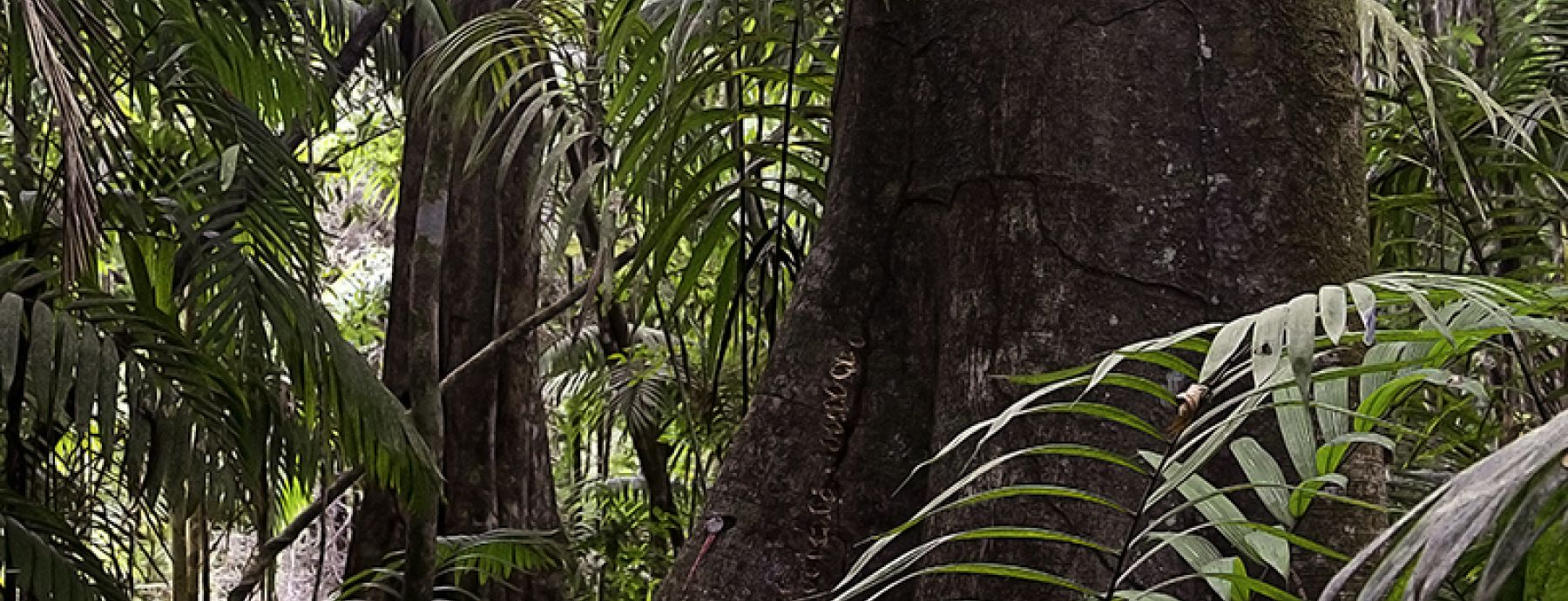Species abundance influences inter- and intra-specific competition, how that species tolerates abiotic conditions, and spatial dynamics between populations within a community. Locally rare tropical tree species are more sensitive to specific soil pathogens, suggesting that relative abundance affects host-specific pathogens. Rare species in a plant community may experience reduced allelic diversity and therefore be less capable of launching an immune response to ward off pathogens; this results in negative density-dependence and a lower equilibrium population size, meaning rare species stay rare. These researchers postulate that a reduction in pathogen resistance (R) genes in neighbouring plants should increase their cosusceptibility to particular pathogen strains and increase pathogen transmission and negative density-dependence.
CIDD’s Jim Marden, along with Scott Magan, Mark Peterson, Eric Wafula, Howard Fescemyer, Joshua Der, Claude Depamphilis, and Liza Comita, conducted experiments of six phylogenetically distant and diverse tree species from the same tropical tree community to understand the consequences of abundance on pathogen-resistance. They measured the expression level and polymorphism in seedling roots under different treatments using transcriptome analyses. Congruent with the other studies, Marden et al. found that R genes showed highly elevated polymorphism compared with the remainder of the transcriptome. R gene diversity was strongly related to local population size, yet the same was not true for the rest of the transcriptome. Marden et al. also found that reduced R gene diversity increases likelihood of transmission and submitting to particular pathogens; this was further supported with evidence that reduced R gene diversity due to inbreeding does not limit defence responses because rare species were able to fully activate defence genes under a salicylic acid treatment. Species with higher diversity had higher antioxidant gene expression when treated with live soil. Roots treated with live soil also underwent growth arrest and the magnitude of arrest increased with population size, which is another pathogen-defence mechanism.
These results support the hypothesis that species with reduced R gene protein-coding diversity are more cosusceptible to particular microbial pathogens, which may be the result of small local population size. Marden et al. indicate that species’ pathogen defences should differ in predictable ways among different-sized local populations. Although there is further work to be done, this study uncovers possible links between genetics, immunity, and ecological dynamics of tropical trees.
Synopsis written by Ellen Brandell
Written By: Jim Marden, Scott Magan,Mark Peterson, Eric Wafula, Howard Fescemyer, Joshua Der, Claude Depamphilis, Liza Comita
Paper Url: http://onlinelibrary.wiley.com/doi/10.1111/mec.13999/full
Paper Id: 10.1111/mec.13999
